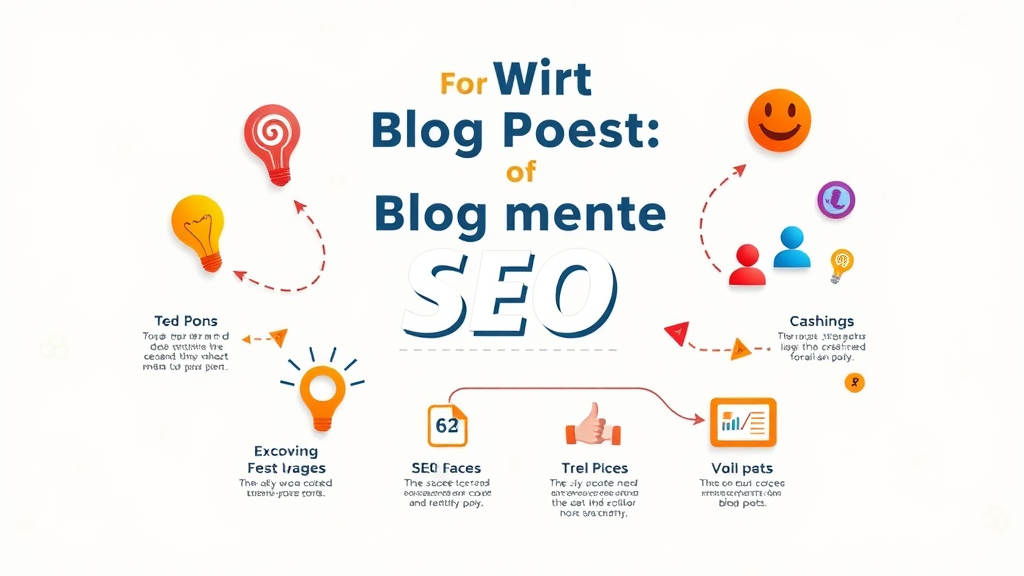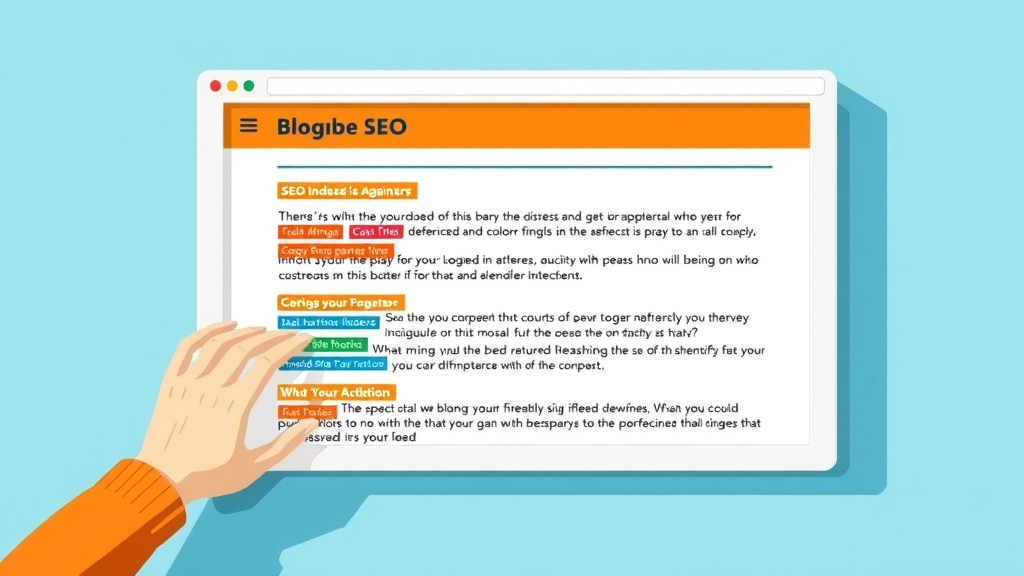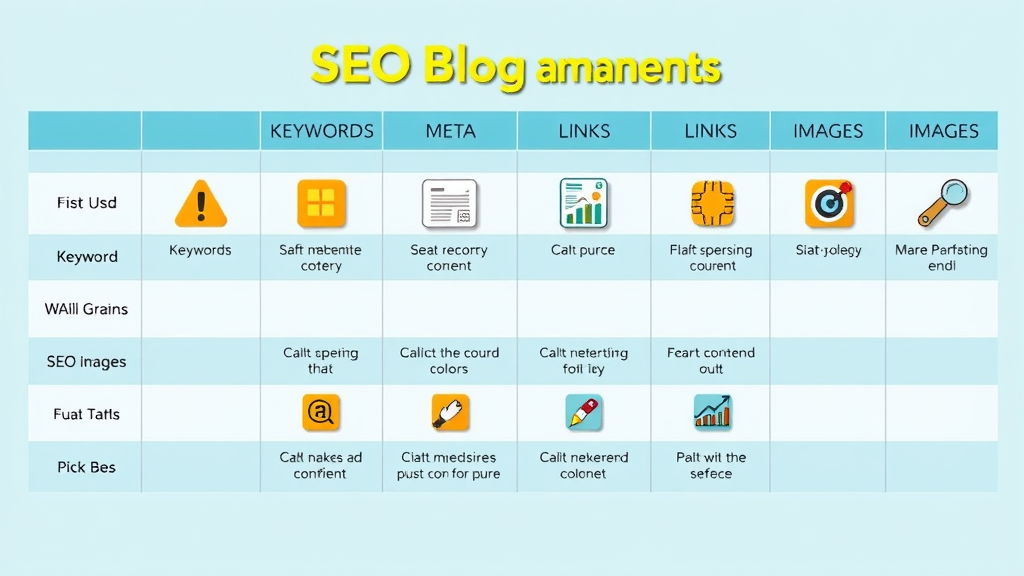Did you know that in 2024, over 90% of online experiences begin with a search engine—yet only 10% of blog posts receive organic traffic? That’s right: despite the sheer volume of blogs published daily, only a select few ever reach the coveted Page 1 of Google. The difference is clear—those that follow SEO-friendly blog writing practices consistently outperform the rest. In this guide, you’ll discover practical, actionable strategies to ensure your next blog post not only attracts but retains the attention of your target audience—and search engines alike.

Why SEO-Friendly Blog Writing Sets You Apart: Eye-Opening Insights
- In 2024, over 90% of online experiences begin with a search engine—yet only 10% of blog posts receive organic traffic. Transform this statistic with actionable SEO-friendly blog strategies.
The digital landscape is more crowded—and more competitive—than ever. To rise above the noise, adopting SEO-friendly blog writing is not optional, but essential. A typical blog post that neglects search engine optimization can easily be buried beneath thousands of others. However, mastering a few key strategies—such as keyword research, quality content, and thoughtful internal linking—can dramatically increase your chance of reaching users searching for your expertise.
Implementing SEO-friendly tactics in your blog posts is not just about pleasing algorithms. It’s about delivering exactly what your readers need, precisely when they’re searching for it. When you use tools like meta descriptions, keyword-rich headers (h2, h3), and alt text for images, you help search engines and your audience simultaneously. These best practices set your work apart, attracting organic traffic and establishing long-term authority in your niche.
Achieve Broad Reach: What You’ll Discover About SEO-Friendly Blog Writing
- How to align your blog post with search engine intent
- Efficient keyword research for SEO-friendly blog content
- Crafting compelling headlines and meta descriptions
- Best practices for internal links and alt text
- Ways to audit and optimize existing blog posts for search engines

This guide will walk you step by step through every part of the SEO-friendly blog writing process, whether you’re starting a new post or optimizing existing content. By the end, you’ll have the skills to align with user search intent, speed up your keyword research, craft must-click headlines, optimize images with alt text , strengthen your internal linking, and ensure all blog posts are engineered for high visibility in search engine results .
Mastering the Basics: What is SEO-Friendly Blog Writing?
SEO-friendly blog writing refers to the deliberate creation of blog posts that are optimized for both readers and search engines. It goes beyond simply inserting target keywords: it’s about producing quality content that aligns with search intent , utilizes clear meta descriptions, and provides a great user experience. At its core, this approach ensures your friendly blog posts are discoverable, relevant, and engaging.
To achieve effective results, you must focus on the fundamentals. This includes a clear understanding of what users are searching for, strategic keyword research , and an organized structure with H1, H2, and H3 headers. Optimizing meta descriptions and alt text enables better ranking in engine results, while keeping content user-friendly and informative ensures longer engagement and more shares. Let’s break down these core principles.
The Core Principles of SEO Content for Blog Posts
- Understanding the role of keyword research
- Importance of search intent in blog post creation
- How meta descriptions enhance SEO-friendliness
Successful SEO content for your blog post always begins with keyword research . Identifying a focus keyword and related keywords enables you to match your writing to what your audience is actively searching for—the essential first step in bringing organic traffic. Search intent digs even deeper, ensuring your content answers the specific needs behind a search term, be it informational, navigational, or transactional.
Another critical element is the meta description . This 150-160 character summary appears beneath your headline in search engine results and can directly impact your click-through rate. Concise, relevant meta descriptions that use the main keyword help both users and search engines understand the value of your content, boosting your rankings and encouraging more visits.
Step-By-Step Guide: Writing a High-Impact SEO-Friendly Blog Post
Creating blog posts that rise to the top isn’t about luck—it’s about methodical SEO-friendly blog writing . Here’s a comprehensive, actionable blueprint that will help you master every step from topic selection to hitting publish.
Keyword Research for Powerful SEO Content
- Identify high-ranking related keywords for your friendly blog post
- Analyze competitors with keyword research tools
Begin every blog post by choosing a target keyword that is relevant, high-volume, and realistic for your site’s authority level. Use a keyword planner or a powerful research tool like SEMrush, Ahrefs, or Google Keyword Planner to identify high-value keywords and related keywords that you can naturally incorporate. Analyze the top-ranking blog posts for your main keyword. What subtopics do they tackle? Which secondary keywords and phrases occur most frequently? This helps search engines categorize your blog content and determine its relevance for users’ queries.
Beyond volume, factor in search intent . Are users looking to learn (“how to”), compare (“best X for Y”), or buy? Tuning your content to match this intent boosts the odds your friendly blog post will satisfy both users and search engines, elevating your chance of ranking.

Structuring Your Blog Post for Search Engines and Audiences
- Crafting SEO-optimized h1, h2, h3 headers
- Effective use of meta descriptions
- Creating engaging introductions and conclusions
Effective structure is pivotal in SEO-friendly blog writing . Start with an H1 that features your main keyword and clearly states what the blog post offers. Use H2 and H3 headers to guide readers and search engines through your core ideas, using related keywords and variations of your target keyword. This boosts readability and helps algorithms quickly understand your post’s structure and relevance.
Each section should begin with a compelling summary, followed by practical examples or deeper explanation. The meta description should give a concise, irresistible overview to encourage clicks from the search engine results. Finally, close with a clear, strong conclusion that directs users to an action, such as commenting, sharing, or exploring more content.

Optimizing Meta Descriptions and Alt Text for Blog Posts
- Best practices for meta descriptions in friendly blog writing
- How to write alt text that boosts your SEO content
A winning meta description captures attention, summarizes the page in 150-160 characters, and seamlessly integrates the main keyword . Use action words, highlight the core benefit, and avoid duplicating content from your first paragraph. The right meta description helps search engines present your blog post more prominently and motivates clicks.
Optimizing alt text has a dual benefit: it makes your blog accessible for all users and improves SEO. Keep alt text short—descriptive, keyword-relevant, and clear. For each image, describe what’s shown and, where appropriate, weave in your focus keyword or a close variant. By doing so, you help search engines index your visual content and boost your blog’s authority, especially in image searches.
Crafting Content That Dominates: Advanced SEO Strategies for Blog Posts
Once the basics are mastered, it’s time for strategies that move the needle even further. These advanced approaches help your friendly blog post become not only discoverable, but dominant in search engine rankings.
Leveraging Internal Linking and Related Keywords in SEO-Friendly Blog Posts
- Building effective internal links for blog post authority
- Utilizing related keywords to enhance SEO content
Internal linking is the art of connecting your own blog posts together with smart anchor text . This serves two functions: spreading link authority throughout your website and guiding readers to related information they’re likely to value. Each post should naturally include 3-5 internal links to other, relevant blog entries.
Go beyond the main keyword. Sprinkle related keywords throughout your content to add contextual depth, helping search engines understand your blog’s scope, boosting your chance of ranking for secondary searches, and increasing the user’s time on page. This combination strengthens topical expertise and trust.

Matching Search Intent with Every Friendly Blog Post
- Adapting your content based on user search intent
- Creating content for informational, navigational, and transactional searches
Search intent is the why behind the search term—a crucial consideration for SEO-friendly blog writing . Are users trying to learn something new, compare options, or buy a product? Effective blog posts adapt to this intent within each piece. Informational posts might break down complex processes or offer how-tos. Navigational posts point to specific resources, while transactional intent gets ahead by offering comparisons, reviews, or calls to buy.
By building unique combinations of keywords and sections within your friendly blog post , you signal to search engines exactly what user needs you fulfill. That means better visibility, more qualified visitors, and higher conversion opportunities.

Create Content for Both Users and Search Engines
- Writing compelling, informative, and readable blog posts
- Balancing keyword use with natural, engaging prose
The best SEO content is always written for people first—and optimized for search engines second. Focus on providing value: answer questions clearly, include actionable tips, and format posts for easy scanning with short paragraphs, lists, and bolded key terms. Avoid keyword stuffing ; instead, blend focus keywords and related phrases organically, while making your stories, examples, and advice feel relatable.
"Google only loves you when everyone else loves you first." – Wendy Piersall
Remember, a well-written friendly blog post not only ranks due to technical optimization, but because users spend time on your site, share your content, and return for more. This helps search engines recognize and reward consistently high-value content.
Proven Techniques and Hacks: Fast-Tracking Your SEO-Friendly Blog Results
- How to audit existing blog posts for search engine visibility
- Utilizing content velocity to accelerate rankings
- Best SEO tools for blog writers in 2024
Already have a library of content? Use tools such as Google Search Console, SEMrush, or SurferSEO to audit and optimize posts for missed opportunities. Check for proper keyword placement, effective meta descriptions, and the presence of internal links . These steps ensure every blog post is updated for current search engine algorithms.
Content velocity—the rate at which you publish quality blog posts —is setting new standards in 2024. Regular updates and fresh posts signal authority and relevance to search engines , giving your site an edge. Mastering these proven techniques can fast-track your path to prominent rankings.

Visual learners can maximize results by following a step-by-step video tutorial focused on optimizing your blog for both users and search engines. (Embed relevant video here.)
Tables: Key Components of an SEO-Friendly Blog Post
| Component | Description | Best Practice |
|---|---|---|
| Keyword Placement | Use in H1, H2, H3, first 100 words | Naturally and strategically |
| Meta Description | 150-160 characters | Clear summary with target keyword |
| Internal Links | 3-5 per post | Relevant contextual anchors |
| Alt Text | Every image | Describe image and include keyword if relevant |

SEO-Friendly Blog Writing Checklist for Success
- Conduct keyword research and analyze competitors
- Map out user search intent
- Outline with keyword-rich h1, h2, and h3 headers
- Optimize meta descriptions and alt text for every image
- Add internal and external links relevant to the topic
Following this checklist for every blog post will ensure your content is not only discoverable by search engines but also highly valuable to your target audience. This helps search engines assign higher trust to your site, and your readers will notice the difference in quality and utility.
People Also Ask: How to Write a SEO Friendly Blog?
- To write a SEO friendly blog, focus on keyword research, align your content with search intent, use clear headers (h1, h2, h3), optimize images with alt text, and craft a compelling meta description. Ensure your post provides value, readability, and internal links to other relevant blog posts.
The secret to writing an SEO-friendly blog is balancing optimization with a genuine, helpful voice. Keyword research uncovers what your target audience wants, while a focus on search intent ensures you deliver. Maintain a logical flow with clearly marked headers, optimize all on-page elements, and always aim for quality content that answers readers’ real questions.
People Also Ask: How to Check If a Blog is SEO Friendly?
- Check if your blog has relevant keywords in headers, an optimized meta description, proper use of internal links, and alt text for all images. Tools like Google Search Console and SEMrush audit your posts for SEO elements and flag areas for improvement.
Assessing a blog’s SEO-friendliness is straightforward when knowing what to look for. Start with a technical audit: check for the main keyword in H1 and within the first 100 words, evaluate the meta description for clarity and relevance, and make sure internal links use descriptive anchor text. Ensure each image has alt text that ties back to the subject. These techniques help search engines and users alike.

People Also Ask: What is SEO Friendly Content Writing?
- SEO friendly content writing combines strategic keyword use, naturally written content, optimized meta descriptions and alt text, and a structure tailored to both users and search engines, ensuring high discoverability and relevance.
True SEO-friendly content embraces both art and science. It’s not about overstuffing keywords, but using them thoughtfully within naturally flowing writing. This includes headline optimization, clear structure, value-driven information, and the technical details—like meta and image optimization—that together propel content to the top of the search engine results.
People Also Ask: Is Blogging Still Good for SEO?
- Blogging is still essential for SEO in 2024 as search engines prefer fresh, valuable content. High-quality, SEO-friendly blog posts drive traffic, build authority, and help websites rank for a greater set of keywords than static pages alone.
Yes, blogging remains a powerhouse for SEO—perhaps more so than ever. Regularly published, well-optimized blog posts show both users and search engines your website is active, authoritative, and trustworthy. This ongoing effort increases the range of search terms you can rank for, brings in new organic traffic, and strengthens your domain authority over time.

FAQ: Your Questions About SEO-Friendly Blog Writing Answered
-
What role does keyword research play in SEO-friendly blog writing?
Comprehensive keyword research sets the foundation for your blog by identifying topics with the greatest traffic and ranking potential, aligning content with actual user searches, and steering you clear of overly competitive or irrelevant terms. -
How often should I update my blog posts for better SEO?
Updates every 3-6 months are recommended. Refresh data, expand sections, and update internal links to signal to search engines that your content remains relevant and valuable. -
Does image optimization and alt text still matter in 2024?
Absolutely. Optimized images and alt text continue to drive both accessibility and extra search engine traffic, especially as visual search becomes more prominent. -
Can I use AI to accelerate my SEO content creation?
Yes. AI tools can suggest keywords, analyze competitors, and help you outline or generate drafts—speeding up the SEO content process while maintaining quality, provided you review and revise for unique value.
Power Up Your SEO-Friendly Blog Writing: Strategies for Ongoing Success
- Revisit and update content regularly for higher rankings
- Track SEO performance with the latest analytics tools
- Explore AI-powered solutions to boost your content velocity
Want to see AI in action? Watch this video explaining how AI tools streamline the process of researching, drafting, and scaling up SEO-friendly blog writing—without sacrificing quality or uniqueness. (Embed video here.)
Real-World SEO-Friendly Blog Post Examples
- Showcase of blog posts ranking on Page 1
- Breakdown of their SEO elements and strategies used
Consider a top-ranking guide on “plant-based nutrition”: It opens with an intent-matched introduction, targets long-tail and related keywords throughout H2/H3s, features scannable lists and images with descriptive alt text , links to supporting articles, and includes a strong meta description. Each element is intentional, replicable, and rooted in the best practices outlined above.
Want a deeper breakdown? Watch an expert walk through live examples of SEO-friendly posts that have climbed to the first page, highlighting the techniques and formats you can emulate for your own success. (Embed video here.)
Action Steps: Launching Your Next SEO-Friendly Blog Post
- Plan with keyword and search intent research
- Write with SEO-friendly structure and meta elements
- Review with technical and on-page SEO tools
- Publish, promote, and monitor results
- Iterate using analytics and user feedback
The Future of SEO-Friendly Blog Writing: Adapt and Accelerate with Content Velocity
- Emerging trends: AI content creation, Google’s evolving algorithms, and user-focused SEO
- How content velocity shapes blog ranking success
As AI tools and search engine algorithms continue to evolve, rapid, consistent publication of new, quality blog posts —known as content velocity—offers a compounding advantage. The future belongs to those who adapt, embracing automation for ideation and routine tasks, but elevate every post with real insight and user focus.

"Content velocity is the new SEO. Outpace your competition, and authority follows."
Start Your SEO-Friendly Blogging Journey Today
- As AI powers visibility, traditional SEO becomes less and less valuable. Blogging is the new visibility, and content velocity is the key to its leverage. Learn more with Stratalyst AI at https://stratalystai.com
Conclusion: Take the next step now: combine smart keyword research with ongoing optimization and strategic content velocity to rank your blog posts faster and further than ever before.
 Add Row
Add Row  Add
Add 




Write A Comment